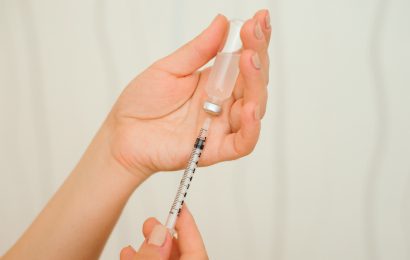Antibiotics administered in doses equivalent to those used in human children altered the mix of gut bacteria in young mice and significantly raised their risk for Type 1 diabetes, in new research from NYU Langone Medical Center and New York University School of Medicine. Approximately 1.25 million people in the United States are living with Type 1, according to the American Diabetes Association.
By the time he or she is 10 years old, the average American child has received 10 courses of antibiotics. These medicines can affect the gut microbiome, the roughly 100 trillion bacteria and other organisms living in the human gut that recent research has shown play an important role in aspects of health such as digestion and immunity. As the popularity of antibiotics has grown in recent decades, the incidence of autoimmune diseases like Type 1 diabetes (in which the immune system mistakenly attacks the insulin-producing beta cells of the pancreas) has more than doubled, and the rate of Type 1 diabetes around the world has been growing by about 3% per year.
To evaluate the effects of antibiotics on the risk of developing Type 1 diabetes, researchers worked with three groups of young non-obese diabetic (NOD) mice, which are more susceptible to the condition. One group of mice was given continuous, low-dose antibiotics; one was given higher, periodic doses of antibiotics, mimicking how children are typically treated with the medicines; and one group served as the control and received no antibiotics.
The researchers found that male mice receiving the higher doses of antibiotics developed Type 1 diabetes at nearly double the rate of those in the control group (53% compared to 26%). And in the mice that had received the high-dose courses of antibiotics, the gut microbiome was changed, with fewer different types of bacteria present and almost none of a certain type of bacteria that appears to play a role in training the immune system.
The increased diabetes rate was not seen with the lower dose of antibiotics, and the results were mixed in female mice receiving the high-dose treatments. Further studies are needed, the investigators noted, to determine the effects of antibiotics on Type 1 diabetes development by sex.
“This latest study result is compelling, linking the effects of use of antibiotics in mice to Type 1 diabetes,” said Jessica Dunne, director of discovery research at JDRF. “This is the first study of its kind suggesting that antibiotic use can alter the microbiota and have lasting effects on immunological and metabolic development, resulting in autoimmunity. We’re eager to see how these findings may impact the discovery of Type 1 diabetes preventive treatments in the future and continued research in the area of vaccines.”
“We’re studying mice, not children,” noted lead study author Martin J. Blaser, MD, “But still we can learn things from studying mice that help inform future trials in children.”
For more information, see the article “Antibiotic Treatment Increased Risk for Type 1 Diabetes in Animal Study” or the study’s abstract in the journal Nature Microbiology. And to learn more about recent research into Type 1 diabetes, read “New Insights Into the Progression of Type 1 Diabetes,” by certified diabetes educator Amy Campbell.
If you’re looking to adjust your diabetes management program for better control, you’ll want to sign up for Joslin’s DO IT Program. Bookmark DiabetesSelfManagement.com and tune in tomorrow to learn more.





